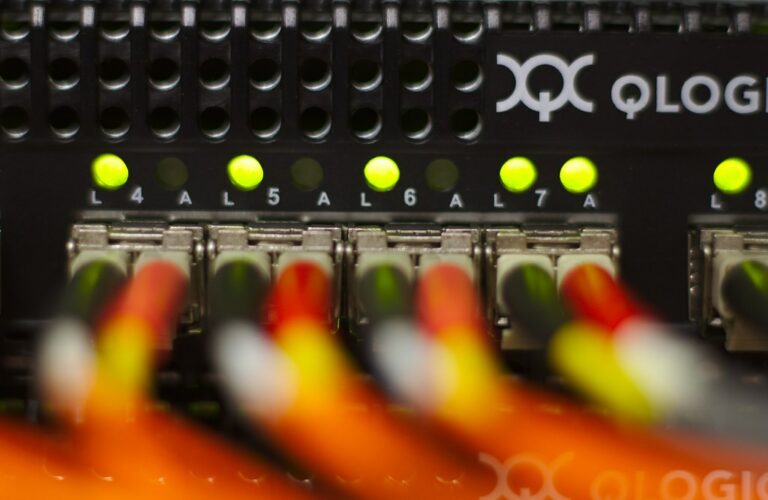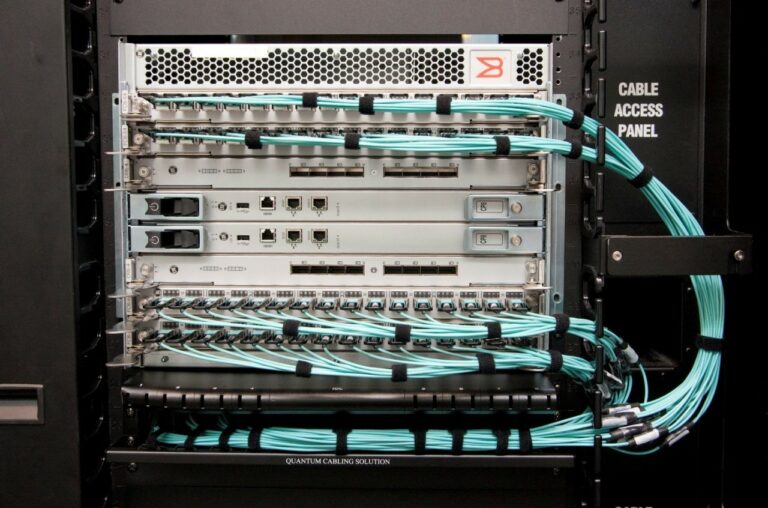The IT world is driven by change in the various technologies that affect the overall environment: networking, servers, storage systems, operating systems and applications. These can be seen as accelerators, which in turn are moderated by the conservatism of the IT profession: “Don’t break something that’s working.”
This in turn is propelled by IT organizations’ need to adapt to a changing world – to offer better products and services, in more places, around the clock at ever-lower costs, before the competition does. And all of these moving parts are subject to periodic, and largely unpredictable, dislocations of the global economy.
Clearly, the past decade has been one of tumultuous change.
Servers, OSes, Applications
Moore’s Law has marched on over the past decade. CPUs are a hundred times faster than they were ten years ago, and they routinely have multiple cores on a chip. In PCs, faster CPUs need faster memory, graphics and I/O, so architectures improved dramatically. And mobility increased – laptops now outnumber desktops.
On the commodity server front, we started with products spanning low-cost 1U servers to medium performance quad-processor systems. We still have the low-cost products, but they are a lot faster, and the high end now delivers 100 times more performance, with commensurate changes in I/O capabilities. For example, the proliferation of higher-speed I/O architectures in commodity servers now makes 10Gbps I/O a practical solution, and wire-speed I/O feasible.
But perhaps the most dramatic change in the server environment has been the explosion of virtual servers over the past three years. It’s no coincidence that this happened during a global economic crash. New technology usually takes a while to be adopted. But virtual servers promised a 90% savings in server hardware (as well as power and cooling) and similar savings in application provisioning overhead, and provided the impetus for IT organizations to completely rethink their application delivery architecture.
Networking
Ethernet is one of the few ubiquitous technologies in IT today. As the Internet has become the operations fabric for all companies, every enterprise has realized that a robust, scalable Ethernet infrastructure is a competitive requirement.
The fundamental rule of building switched networks is that a faster technology is always needed to aggregate multiple lower-speed connections. As the number of 1GbE ports proliferated, it drove the requirement and demand for 10GbE, which is now widely deployed in backbones, network aggregation, and high-performance storage environments.
And the evolution cycle continues on the server front. Commodity servers today often include 10GbE ports in base configurations, and 10GbE TCP/IP offload has made great strides in hardware and software. Stateless offload, which is rapidly becoming a de facto standard, can utilize spare CPU cores or network adapters for network processing, and is broadly supported in operating system I/O stacks. This makes it possible for software to take advantage of offload technologies without requiring additional hardware or impacting application performance.
Further, deployment of 10GbE has driven the need for higher speed Ethernet: 40/100GbE specs are in the standards review process, with final specs expected in mid-2010.
We have also seen the recent emergence of Data Center Bridging – Ethernet enhancements designed to enable Ethernet to support Fibre Channel, which requires a lossless transport. These enhancements, besides enabling Fibre Channel over Ethernet (FCoE), help deliver predictable performance for TCP/IP-based protocols (such as NFS and iSCSI) in congested “converged” environments.
Storage Networking
Over the past decade the storage industry doubled capacity and halved $/GB every year with systems featuring increasingly sophisticated data management and protection capabilities.
At the disk drive level, low-cost, high-capacity ATA drives enabled cost-effective secondary storage, which has largely pushed tape into the archive niche. SATA drives further expanded secondary storage and pushed low-cost media into primary storage. Fibre Channel drives delivered 2Gbps and then 4Gbps, yet are now being displaced by 3Gbps SAS drives, with 6Gbps coming soon. IDC estimates that, in 2009, SAS drives will account for about 50% of the enterprise disk drive market, with SATA accounting for about 30% and Fibre Channel for about 20%.
On the networked storage front, Fibre Channel SANs, already established as the preferred storage networking solution for tier-1 data centers, continued through the decade to be the dominant technology, with fabrics moving from 1Gbps to 8Gbps today. In the past year, we also saw the emergence of systems supporting FCoE, which enables the transport of Fibre Channel frames over Ethernet. FCoE allows IT to move to a “converged” 10Gbps Ethernet fabric in the data center, while at the same time preserving investments in FC arrays and SAN management expertise.
The past 10 years also saw rapid growth in the adoption of Ethernet-connected storage networking. NAS systems supporting NFS expanded out of the niche of file-sharing support for Unix servers into networked storage for business applications and databases. The market for NAS systems supporting CIFS, a file-serving protocol for Windows, also grew rapidly, driven by the growth of the Windows market.
In the middle of the decade, we saw the emergence of iSCSI, a SAN protocol designed to transport SCSI block storage commands over Ethernet using TCP/IP. iSCSI was specifically designed to take advantage of the ease of use, availability and guaranteed delivery mechanisms provided by TCP/IP, and provide a seamless path from 1GbE to 10GbE and beyond.
In addition to these protocol and component advances, storage system features became increasingly sophisticated through the decade, with broad support for snapshots, remote copy, asynchronous and synchronous mirroring, boot from SAN, thin provisioning, data deduplication, etc. This feature set is available even in low-end systems, and has driven the inexorable decline in direct-attached storage.
IT Economics
After the Internet bubble burst, and then the recession following 9/11, business economics moved into a new era. Spending became tight, and an era of improving efficiency (“Do more with less”) swept the IT world. For IT organizations, budgets moved to flat or less, supporting 24×7 operations while coping with exponential data growth, and data protection and recovery became a top priority. This drove new buying patterns and the consideration of new technologies. Complexity became a bad thing. Price became a major consideration.
This didn’t change through the decade, until the global crash of the past two years. Now companies have to embrace radical change, new technologies, and consider outsourcing anything other than core competencies.
What does all this mean for iSCSI? Interestingly, iSCSI benefited from almost all of these changes through the decade. As an essentially software phenomenon, it leverages and derives benefit from the hardware and the software advances, as well as from the economic changes.
iSCSI Host/OS/App Environments
When iSCSI was launched, Fibre Channel was well-established as a high-performance SAN solution. It seems obvious, therefore, that iSCSI would appeal to IT environments that chose not to move to a SAN: either direct-attached storage environments that previously didn’t need SAN storage, or environments that had rejected Fibre Channel for some reason.
Also, FC SAN environments were mostly tier-1 and tier-2 data centers running primarily Unix systems, so iSCSI first got traction in Windows and Linux environments. Supporting this further, Windows applications were increasingly viewed through the decade as mission critical, driving the need for networked storage instead of direct-attached storage.
Another consideration, obvious in hindsight, is that the availability of fully featured iSCSI software initiators drove adoption. This happened first with Windows, and more recently with VMware.
Today, typical host/OS environments for iSCSI include:
• Intel-architecture servers
• Windows; or Windows with some Linux or Unix
• Virtual server environments – mostly VMware, with some Xen and Hyper-V
This may change over time, as virtual server environments become dominant, but Windows will continue to be the sweet spot for iSCSI, followed by Linux and Unix.
Who Buys iSCSI, And Why?
iSCSI has become a popular SAN solution in both large organizations and SMBs. Deployments in large enterprises have typically been in tier-2 and tier-3 data centers and large remote offices. In SMB environments, it is common to see iSCSI SANs in both primary and secondary data centers and in large remote offices.
Another sweet spot for iSCSI is in application service provider environments. NFS-based NAS running on a high-performance Ethernet fabric often predominates here (because most traffic is file-based). iSCSI adds seamless support for applications that benefit from SANs. These are now evolving into cloud computing environments, as virtual server software has been added.
In all of these cases, two primary reasons for purchasing iSCSI systems are:
• It isn’t Fibre Channel. iSCSI has lower cost and less complexity and doesn’t require specialists; it can be configured and managed by existing server administrators that know how to configure TCP/IP; and security and array management is relatively simple.
• iSCSI is software — often a standard part of the operating system, which uses standard networking infrastructure and built-in server ports. As software initiators have become more feature-rich in the past five years, this has driven iSCSI into more markets. For example, support of software boot from SAN in Microsoft’s iSCSI initiator has driven the technology into high-density blade and virtual server environments.
The application sweet spot for iSCSI has been storage consolidation for business-critical Windows environments. iSCSI’s popularity has been fueled not only by the fact that it provides affordable SAN storage, but also by the fact that even entry-level iSCSI disk arrays often include sophisticated data-management capabilities such as point-in-time copy, remote copy, LUN cloning and asynchronous mirroring. These features enable IT organizations to significantly improve provisioning and backup/recovery, while reducing infrastructure and administrative costs.
Deployment Considerations
In an iSCSI SAN, host systems are provisioned with iSCSI initiators – typically software initiators. Also, a separate IP network or VLAN for storage traffic is recommended, configured with redundant connections supporting host multi-pathing. Turning on jumbo frames is also a best practice, as it improves performance (15-20% is typical). Single or multiple 1GbE connections are still the dominant connection type, although 10GbE has ramped up in the past year to more than 10% of the total connections.
LUN provisioning is very straightforward — LUNs and virtual server instances are provisioned, and LUNs are mapped to individual virtual servers. LUN masking and iSCSI authentication provide security. Often, a secondary remote environment is set up, and array-based mirroring is configured to support data recovery and virtual server fail-over and recovery in the case of a failure at the primary site.
A variety of tools exist for data migration to new virtual server environments. In addition, either host-based or array-based snapshots integrated with the host environment can be used for fast backup and recovery of data and/or virtual servers. In addition, LUN cloning enables rapid provisioning of virtual servers.
The resulting environment provides improved storage and server utilization, a reduction in administrative overhead, fast backup and recovery, fail-over and continuous operation in the case of a disaster, rapid recovery in the case of application failure, and fast application provisioning for test and development and software upgrades. Advanced capabilities such as thin provisioning are available on both the host virtual server and on iSCSI arrays—further enhancing utilization and recovery. In addition, data deduplication, if available on the array, can make a considerable difference in the amount of disk space required.
iSCSI Market Share
According to IDC, iSCSI has consistently grown faster than the overall networked storage market, and through the third quarter of this year iSCSI was expected to account for 13% of revenues in the networked storage market, with Fibre Channel accounting for 61% and NAS for 26%. In terms of capacity, iSCSI accounts for 15% of the networked storage market, with Fibre Channel SANs at a 52% market share and NAS with the remaining 33% of the market.
In terms of revenue growth, IDC estimates that the iSCSI market will grow 58% this year, vs. 17% for the overall networked storage market. And in terms of capacity growth, the iSCSI market is expected to surge 117% this year, vs. 90% for the total networked storage market.




